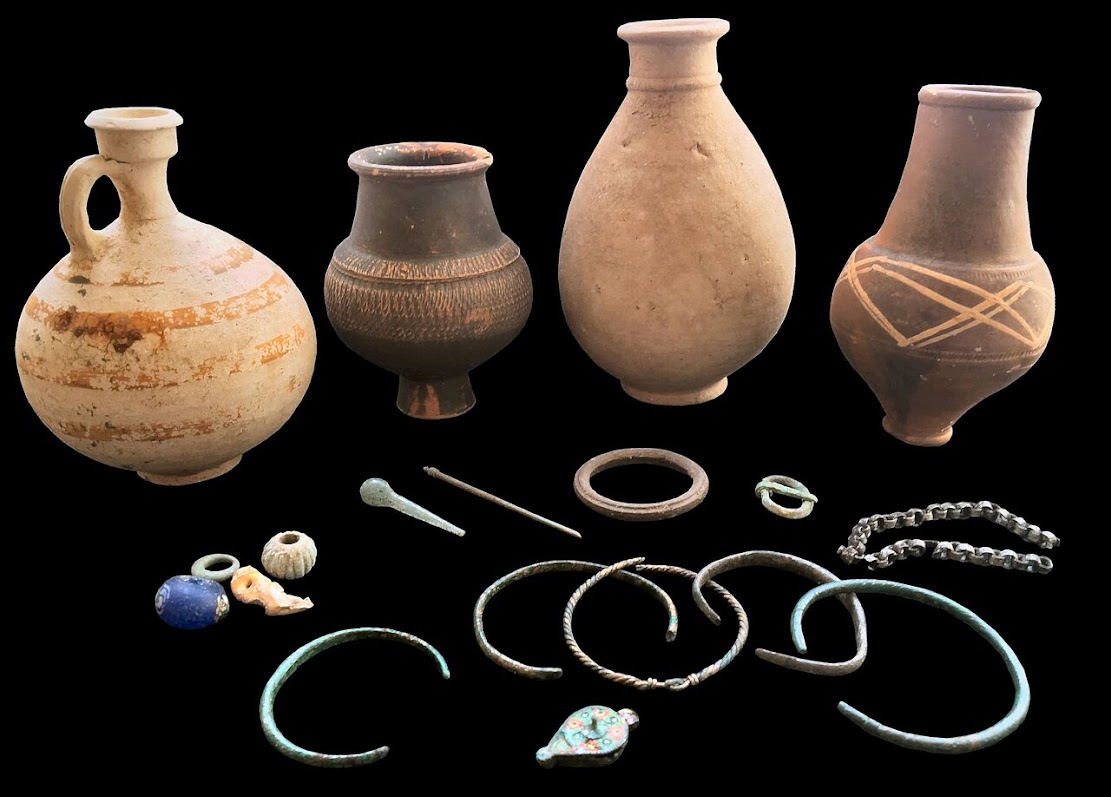For the second year running a project led by University of Leicester archaeologists has been nominated in the Current Archaeology Awards, this year in the category >'Rescue Project of the Year'.

[Credit: University of Leicester]
The project, ‘Buried between Road and River: Investigating a Roman cemetery in Leicester’ (reported on in Current Archaeology Issue 319), investigated part of a large Roman cemetery in Leicester’s West End. Between 2010 and 2015, archaeologists from University of Leicester Archaeological Services (ULAS) carried out a series of excavations at the former ‘Equity Shoes’ factory on Western Road as part of its ongoing redevelopment.
83 skeletons were discovered, dating from the 2nd century AD through to the 4th century. Many were buried with grave goods or exhibit burial customs not previously seen in Leicester, and tantalisingly, a number possibly have African ancestry, the first evidence ever found for Leicester’s ‘migrant’ population. The project is giving archaeologists a wealth of exciting new insights into life in the Roman town, whose inhabitants were perhaps as diverse and multicultural as those who reside in the modern city.
The research being funded by Jamie Lewis Residential is part of the site’s redevelopment. Excavation and analysis of the skeletal assemblage is being carried out by a multi-disciplinary team of researchers from University of Leicester Archaeological Services (ULAS), York Osteoarchaeology Ltd., the Scottish Universities Environmental Research Centre (SUERC) and the British Geological Survey (BGS).

and metal bangles, a buckle, pieces of an unusual silver-chain necklace and an enamelled seal-box
in the shape of a Roman lamp [Credit: University of Leicester]
Mathew Morris, project supervisor for ULAS said: “Until recently, burial practices in Leicester’s Roman cemeteries were poorly understood. Now, this excavation is providing a wealth of exciting new insights into the Roman town’s diverse population.
"Five individuals have cranial features that suggest they might have African or mixed ancestry. We are carrying out stable isotopes analysis to see if they were born in Britain or elsewhere in the Roman Empire. So far, two appear to have been born in Britain, one in the Pennines area and one in the Leicester area.
"Analysis is ongoing and the information gained from the study will provide fascinating new insights into the lives of the people living in Roman Leicester. Projects like this can only come about through successful collaboration between developers such as Jamie Lewis and archaeologists, and the notable results of our research highlight how important this process is for British archaeology, as demonstrated by our nomination for this award."

belt plate and strap end [Credit: University of Leicester]
The results of the competition are decided on a public vote which has now opened and can be accessed from the Current Archaeology Awards webpage >www.archaeology.co.uk/vote
Voting will be open until Monday 6 February 2017, and the winners will be announced at Current Archaeology Live! 2017, held at the University of London’s Senate House on 24-25 February.
The nomination is the fourth for the University of Leicester in the past five years. In 2013 the University was awarded ‘Research Project of the Year’ for the Grey Friars Project and the discovery of Richard III. The following year Dr Richard Buckley, Lead Archaeologist on the Greyfriars Project, was awarded ‘Archaeologist of the Year’ and in 2016 the School of Archaeology and Ancient History’s summer fieldschool at Burrough Hill Iron Age Hillfort was nominated for ‘Research Project of the Year’.
One of the highlights of the recent excavations was a simple grave which had been dug into mudstone on the west bank of the River Soar. Buried in the grave were the remains of a middle-aged man wearing an elaborately decorated belt in a style that would have been worn by a late Roman soldier or civil servant during the second half of the 4th century or the early 5th century AD. Belts like this are rare and this is the first occurrence of such a find in Roman Leicester.
Source: University of Leicester [December 01, 2016]